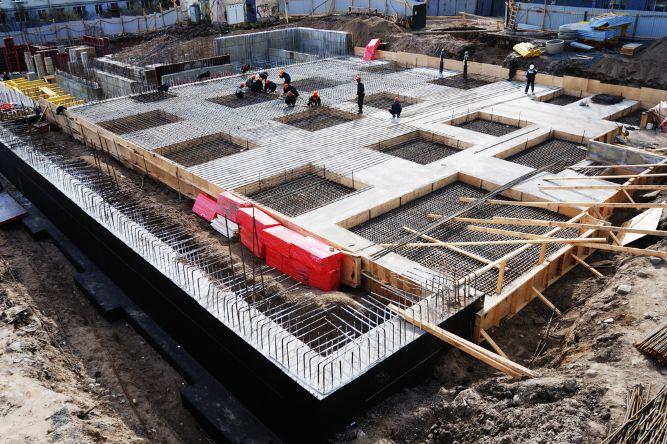When it comes to the success of a building, everything hinges on the foundation. It is a firm base for the rest of the construction process. However, there is no such thing as a one-size-fits-all solution when it comes to the proper foundation. There are several different types to choose from, depending on the unique application.
How do you know which type of foundation your new building may need? Let’s take a closer look at the different types and when each one should be used to have a successful build.
Deep Foundations
If your new building will be built on sand or soft soil, chances are that the ground won’t be able to handle the weight of a new building. This material is ultimately too soft to establish the kind of connection with the earth necessary to sustain significant weight.
Not to mention, you may even be located somewhere near a body of water that will make it difficult to establish the proper support. This is when a deep foundation comes into action.
A deep foundation is exactly what it sounds like – a foundation that sinks deeply underground. It can also be submerged underwater in some cases. For example, you might see a deep foundation when looking at a pier or a bridge. These larger structures can only be built due to the connection that has been made with the solid earth below.
There are two major types of deep foundations that you might encounter with commercial construction:
Pile Foundation
Pile foundations are typically divided into two categories: Friction piles and end-bearing piles. The similarity between them is that a contractor will drill columns into the earth at great depth to support the forthcoming building.
In a friction pile, the column’s surface area is the most important factor. It will share its forces with the soil that the column is embedded in. Depending on its length, a friction pile will have different degrees of weight that it can bear.
On the other hand, end-bearing piles attempt to bypass the soft soil layer at the surface and instead get down to the bedrock beneath. Contractors will bore the foundation into the rock layer that comes beneath the soil, helping to distribute the weight safely.
Caisson Foundation
You’re most likely to encounter a Caisson foundation if you’re building over the water, though there are other times it will come into play as well. Most of the time, the Caissons are made in advance and are then placed in a pit that has already been dug to the solid bedrock beneath the water. Sometimes, they’re built on the construction site using rebar and concrete.
There are several different types of Caisson foundations that you might encounter, such as open, pneumatic, monolithic, sump, and box. Each depends on the desired action of the foundation (such as the ability to pump water) and the limitations of the soil. Some will even allow for maintenance workers to move down the column for future repair work.
Shallow Foundations
On the opposite end of the spectrum, some buildings will have shallow foundations. Technically, this doesn’t necessarily refer to the depth of the foundation. It implies that the foundation is just wider than it is deep. As you might have guessed, a shallow foundation is the more cost-effective route which makes it a bit more common than deep foundations.
Other names for shallow foundations include spread or an open footing.
When might you use a shallow foundation instead of a deep one? Shallow foundations are most often used for lighter buildings with more solid soil. If the dirt beneath can handle the weight, then there’s no need to dig deeper to establish a deep foundation.
Of course, there are also multiple types of shallow foundations that you might encounter in commercial construction:
Mat or Raft Foundations
Buildings that have basements are often constructed with a mat or a raft foundation. The name actually tells you quite a bit about what the foundation looks like: The bottom is buried in the dirt, just like rafts float in the water. In this scenario, the foundation covers the entire area of where you’re building and can support quite a bit of structural load as long as the pillars or columns in the basement are fairly close together.
This type of raft foundation works best when dealing with loose soil that may not have the ability to support an entire building without distributing the weight evenly.
Individual Footing
Most contractors would argue that individual footing is the most common type of foundation. It consists of just one column, sometimes referred to as a pad foundation. With most buildings, the individual footings will be in the shape of a square or a rectangle that will support one column or a pillar. The size required will be determined by the column load and how much weight the soil can bear.
Combined Footing
Once you understand individual footing, it isn’t hard to transfer that knowledge to what is known as combined footing. They are extremely similar, and the name implies the difference. In an individual footing, a single foundation has just one pillar or column.
Combined footing has a single base but two pillars or columns that are relatively close together. Because of their proximity to one another, they can share the foundation. This only works if the two columns are going to be extremely close to one another.
Consult the Professionals
While this is a brief guide to the different types of foundations and when to use them, you will want to consult with qualified commercial contractors to determine what is right for your new building. Dub-L-EE has the experience you need to ensure that your building will be safe for the long haul. Give us a call today to learn more about how we can secure your building from the foundation up!

Eddie has been a resident of Albuquerque his entire life.
After he graduated from high school, Eddie joined the Plumbers & Pipefitters Union where he obtained his Journeyman Plumber and Journeyman Gas Certifications. He then worked in the commercial plumbing industry for 7 years until he and his father decided to go into business together and started Dub-L-EE, LLC.
In the last 7 years Eddie has obtained his GA02, GA03, and MM98 certifications allowing Dub-L-EE to fully utilize Eddie Sr. and Eddie Jr.’s expertise in the construction industry.

